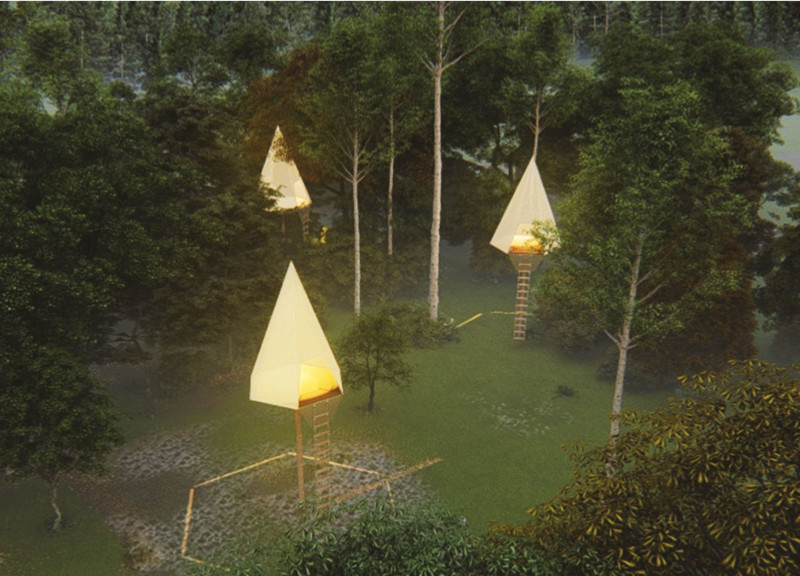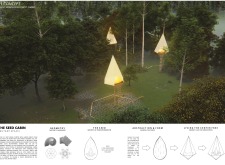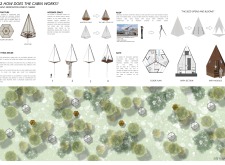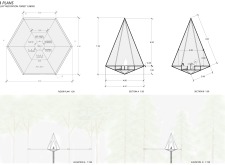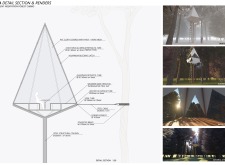5 key facts about this project
The Silent Meditation Forest Cabins are located in Latvia's vast forests, where nature thrives with rich flora and fauna. The aim is to create a retreat that allows individuals to reflect and meditate in a peaceful environment. Inspired by the idea of a seed, which symbolizes growth and the potential for change, the design encourages a deep connection with the landscape. Each cabin serves a specific purpose that aligns with its natural surroundings while emphasizing simplicity and practicality.
Design Concept
The design uses geometric shapes, particularly triangles, to create interconnected forms that make up a hexagonal structure. This choice offers stability and clarity in form, allowing for a central space that is open for meditation. The hexagon reflects a minimalist approach while remaining connected to the natural world. It encourages energy flow and a sense of openness within the cabin.
Spatial Adaptability
Inside each cabin, a central hexagonal area serves multiple roles. It can be used for meditation, dining, or even sleeping. This flexibility makes it possible for users to shape their own experience according to their needs. The focus on adaptable space promotes a sense of comfort and personalization, which is essential for meditation and relaxation.
Access and Interaction
Users reach the cabins by walking through the forest, carrying their belongings and engaging directly with the environment. Entry is simple—pulling a string opens a door that reveals a rope ladder. This method encourages a strong connection with the natural setting, making the experience feel more intimate. The way users enter the cabins emphasizes their journey into a space designed for quiet and reflection.
Materials and Construction
The cabins are built mainly from wooden profiles, providing a natural aesthetic that fits within the forest context. These wooden structures are anchored to nearby trees, which helps with stability and wind resistance. The design features a roof supported by six legs, enhancing the inner space while allowing light and air to flow freely. Windows can be opened, offering views of the forest and creating a dynamic interaction with the surroundings. In addition, an external triple bathroom module maintains functionality without disrupting the overall design coherence.
Each cabin stands as a place for meditation, thoughtfully integrated into the forest scenery. The architecture prioritizes user experience and a connection to nature, offering solitude and calm in a busy world.


